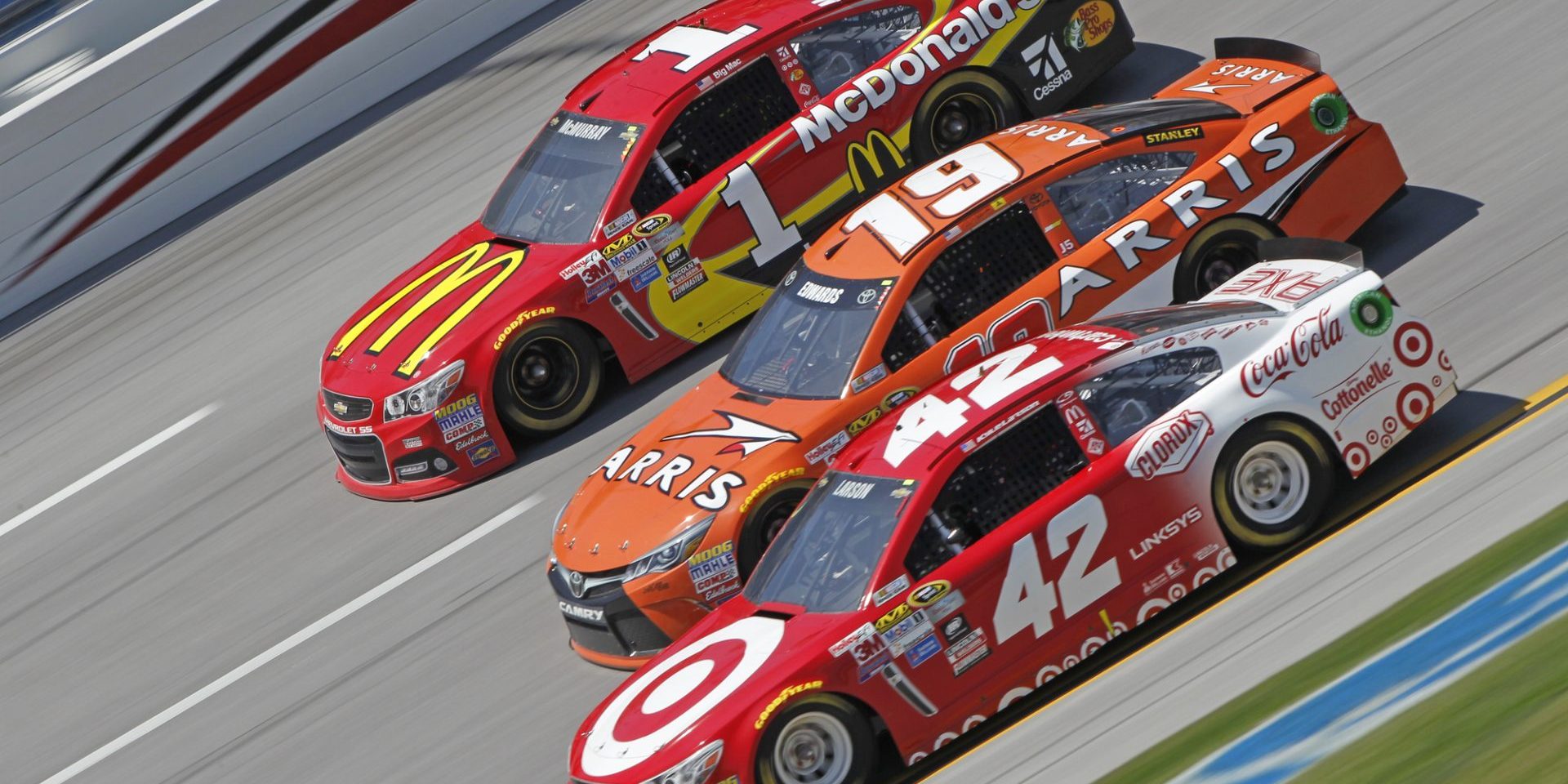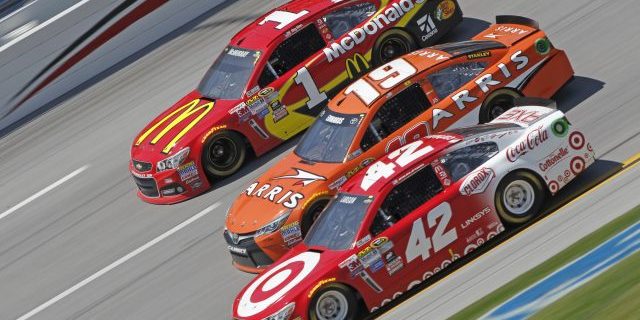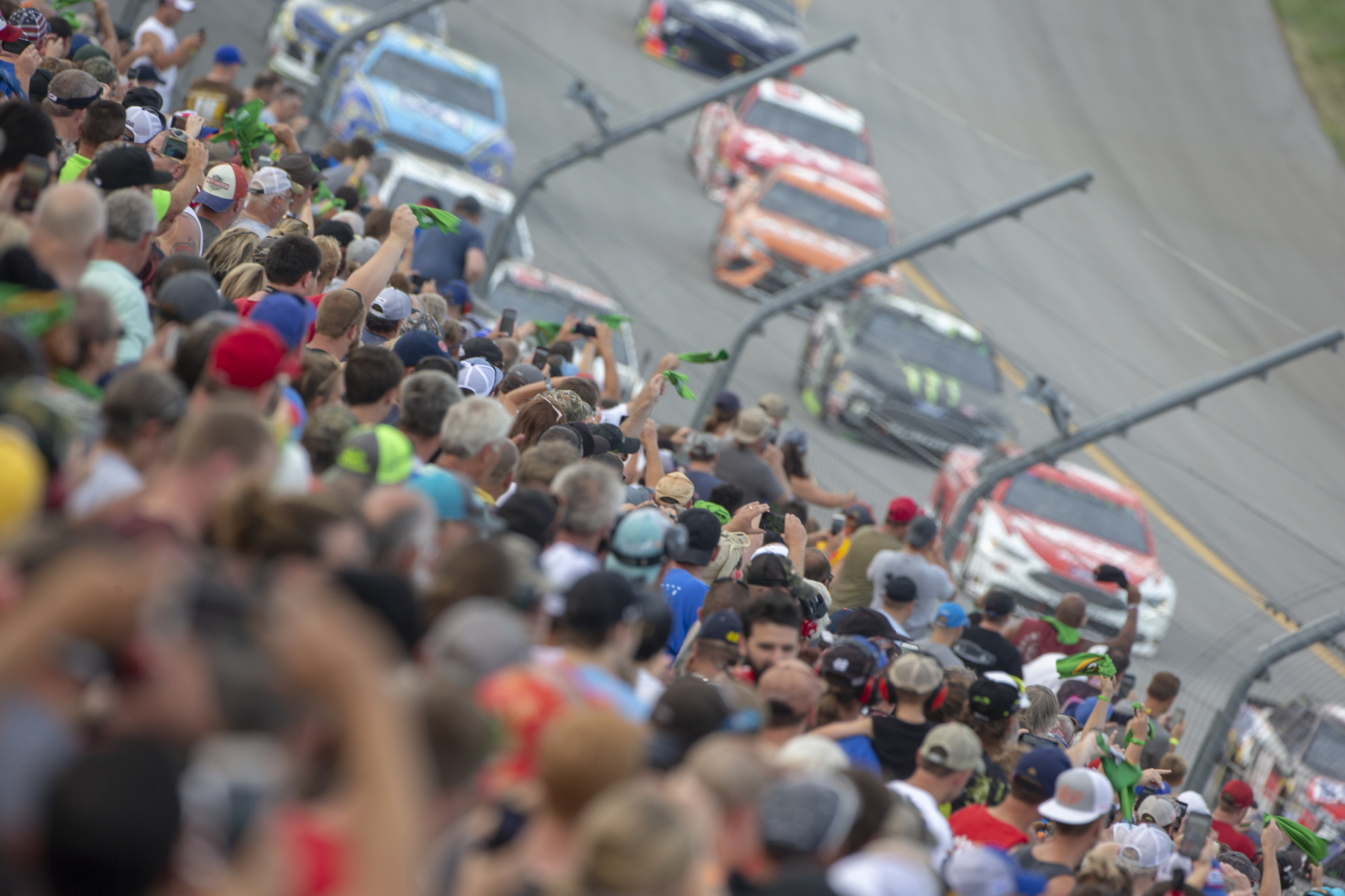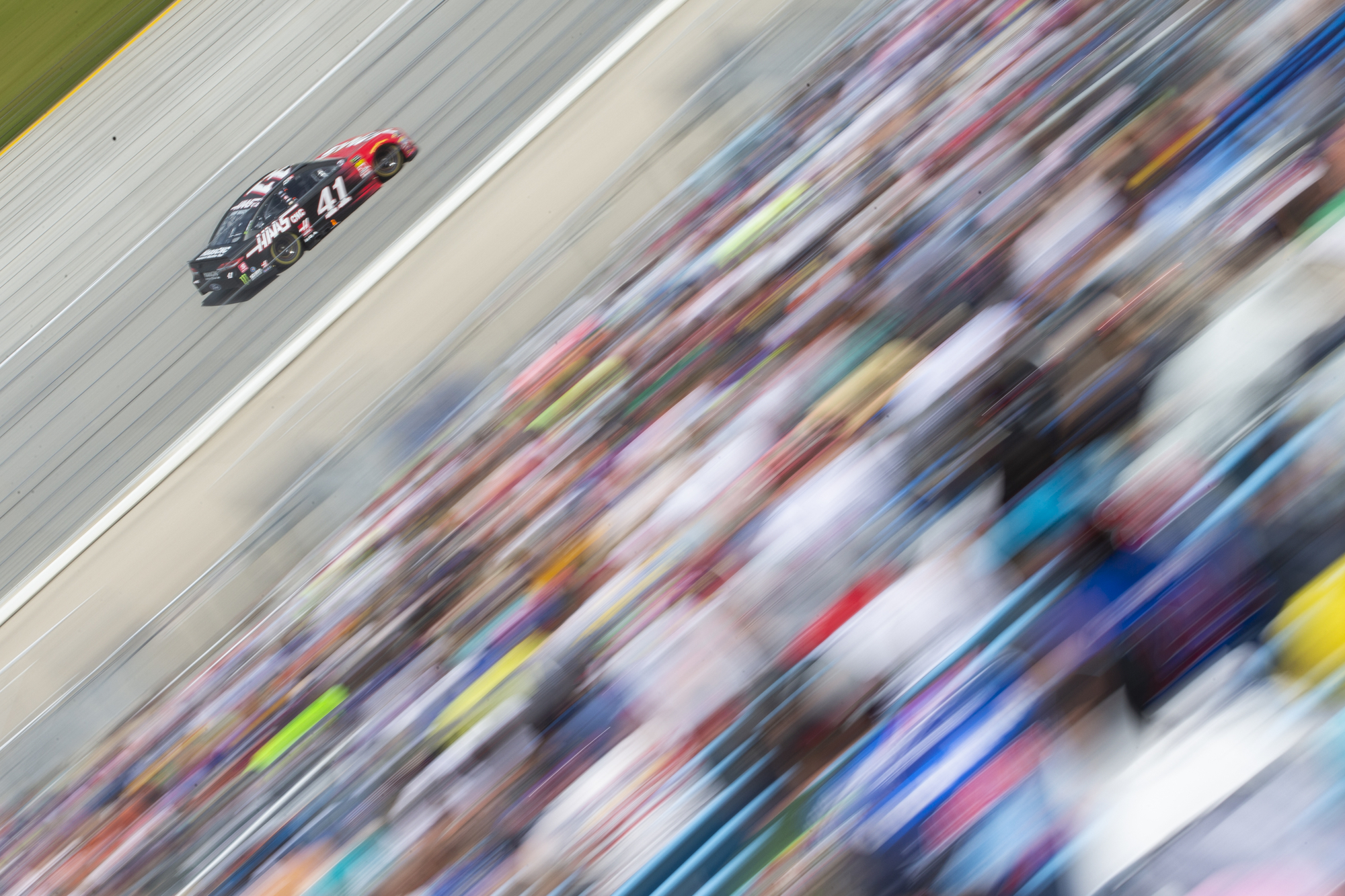Why Do NASCARs Not Have Side Windows? Exploring Aerodynamics and Safety Standards


NASCAR race cars are distinct in many ways, and one noticeable feature is the lack of side windows. Safety is the primary concern in NASCAR, where the risks are high due to the high-speed nature of the sport. Side windows are omitted from NASCAR vehicles to facilitate rapid evacuation of a driver in the event of an emergency or accident. In place of glass windows, a safety net is installed on the driver’s side of the car. This netting serves a dual purpose: it allows for better air circulation within the cockpit, and it prevents debris from entering while still providing an easy exit strategy for the driver.
The absence of side windows also addresses the issue of potential window failure during a high-impact collision. Traditional vehicle doors and windows could become hazards if they were to come loose during a race. The design of NASCAR race cars with open windows ensures that drivers are not at risk of being trapped inside the vehicle, offering an unobstructed escape route. Additionally, the lack of side windows contributes to improved aerodynamics, which is critical in a sport where even the most minute advantage can lead to victory.
Table of Contents
Design and Functionality of NASCAR Vehicles
NASCAR vehicles are designed with a singular focus on high performance and driver safety. This section elaborates on the distinct characteristics that define their design.
Aerodynamics and Speed
The design of a NASCAR car emphasizes aerodynamic efficiency to achieve high speeds. The absence of side windows reduces aerodynamic drag, a factor that can significantly affect speed and stability. To maintain a low coefficient of drag, the body shape of NASCAR cars is fine-tuned to allow air to flow smoothly over the surface, minimizing resistance and maximizing speed.
Next Gen Car Features
The current generation of NASCAR race cars, commonly referred to as the Next Gen car, incorporates advanced safety features and is tailored for enhanced competition. It includes a redesigned chassis, increased downforce, and larger brakes. Additionally, the Next Gen car has symmetrical bodywork to improve aerodynamic behavior and a sealed underbody to aid in efficient airflow management.
Window Nets and Safety
Instead of conventional side windows, NASCAR race cars are equipped with window nets. The primary purpose of the window net is to protect the driver by preventing arms or other body parts from exiting the vehicle during a crash. Moreover, the netting allows for better ventilation inside the car and can also serve as an emergency exit if required. The introduction of window nets has been a significant advancement in race car safety features.
Safety Measures in NASCAR Racing
In NASCAR racing, safety is a foremost consideration, shaping vehicle design and regulations. With a focus on minimizing risks during high-speed races, the sport has evolved with innovative safety features in three key areas: roll cage engineering, cockpit safety protocols, and external safety components.
Roll Cage Engineering
The roll cage is a fundamental component designed to protect the driver during a crash. It is a robust frame built inside the cockpit, fabricated from steel tubing to form a protective shell. The roll cage’s resilient structure is crucial, as it maintains the integrity of the cockpit in the event of a rollover or collision. NASCAR’s continuous advancements, such as the use of steel plates on the left side of the car, increase driver resiliency against impacts.
Cockpit Safety Protocols
The cockpit of a NASCAR vehicle is equipped with several safety measures to ensure the driver’s security. A key feature is the absence of polycarbonate windows, which is a deliberate design choice. Instead of windows, a net is fastened over the opening to allow quick egress in emergencies, maintain airflow, and prevent debris from entering the cockpit. Seats are tailored to drivers and include energy-absorbing foam that cushions impacts. Secure harness systems keep drivers in place, mitigating the risk of injury during sudden stops or accidents.
External Safety Components
NASCAR vehicles lack certain external features common in consumer cars for safety reasons. Notably, the absence of traditional side mirrors enhances aerodynamic efficiency and reduces the risk of parts breaking off and becoming hazardous in a crash. Safety concerns prioritize streamlined surfaces to manage airflow and maintain stability at the extreme speeds of racing. The design extends to safety barriers on the track, known as SAFER barriers, which absorb and reduce the force of a car’s impact, further protecting the driver during a wreck.
The Role of Windows in NASCAR Aerodynamics
NASCAR vehicles forego side windows to optimize airflow and maintain performance efficiency. This unique feature significantly impacts aerodynamic performance, temperature regulation, and overall race car dynamics.
Airflow Management
The absence of side windows on NASCAR vehicles allows for better management of airflow around the car’s body. Smooth airflow is critical for maintaining aerodynamic efficiency, which in turn affects both speed and fuel efficiency. By eliminating windows, which could disrupt airflow, NASCAR engineers ensure air moves evenly across the chassis to reduce drag.
Heat and Air Circulation
In the confined space of a NASCAR cockpit, heat buildup is a significant concern. Side windows would restrict the air circulation necessary to disperse the intense heat generated by the engine and the friction of tires. The open window design assists in regulating the temperature inside the car, providing a form of natural ventilation that helps to keep the drivers cool and alert during races.
Impact on Race Car Performance
The design choice to exclude side windows has a direct effect on the car’s performance. By enhancing aerodynamic efficiency, race cars can achieve higher speeds while also conserving fuel. This design also allows for improved handling and stability at high velocities, as the reduction in aerodynamic drag leads to a more predictable and controllable ride.
Historical Evolution of NASCAR Safety
The safety standards in NASCAR have undergone significant changes, driven by pivotal moments in the sport’s history and the loss of influential drivers.
Safety Enhancements over Time
Over the years, NASCAR has methodically revised its safety regulations to address various safety concerns that have arisen. History shows that in the early days of the sport, there were fewer rules governing car construction and driver safety. As the sport matured, so did the regulations and measures put into place. This evolution can be directly tied to the commitment to protect drivers, crews, and spectators.
A notable shift occurred following a series of fatal crashes. In response, NASCAR introduced the “Car of Tomorrow,” a design with a reinforced roll cage and features like a steel plate on the left side to increase crash resilience. Safety concerns also led to the mandated use of devices like the HANS (Head and Neck Support) system to prevent critical injuries during collisions.
| Year | Safety Feature |
|---|---|
| 2001 | HANS Device Required |
| Mid-2000s | Car of Tomorrow Introduced |
Changes also included the implementation of energy-absorbing walls, commonly known as SAFER barriers, and improvements in the fuel system to reduce the risk of fires after an impact.
Legacy of NASCAR Legends
The legacy of drivers such as Richard Petty, whose career spanned the dangerous early years, has also been influential in advancing safety measures within NASCAR. Their experiences and close calls on the track underscored the immediate need for enhanced safety that far exceeded the rudimentary safety nets of the time.
The death of Dale Earnhardt, Sr. in 2001 at the Daytona 500 was a pivotal moment in NASCAR. It precipitated a comprehensive review and overhaul of safety protocols, resulting in widespread changes to car design and safety equipment. These alterations have continuously evolved to create a safer racing environment. NASCAR’s commitment to safety is an ongoing process, incorporating technological advancements and responding to the ever-present risks of high-speed racing.
NASCAR Racing Operations and Regulation
In the world of NASCAR, regulations and operations are strictly controlled to ensure safety and fairness. These rules affect various aspects, including race car design and team communication during races.
NASCAR’s Regulatory Framework
The NASCAR regulatory guidelines are designed to maintain a level playing field for all competitors. Regulations cover technical specifications for race cars to ensure safety and performance standards are met. NASCAR carefully monitors and enforces these regulations through inspections and penalties for non-compliance.
- Technical specifications include:
- Engine size and power
- Aerodynamic features
- Weight
- Safety features
Consistency is key, and NASCAR’s approach to regulatory guidelines has evolved to adapt to technological advancements while maintaining the integrity of the sport.
Role of Spotters and Crew
Spotters and crew members are fundamental to NASCAR operations. Spotters are responsible for providing real-time information to the drivers, particularly regarding traffic on the track. Their role is crucial in preventing collisions and strategizing overtakes.
- Main responsibilities include:
- Communicating with the driver about the position of other cars
- Advising on when to make strategic moves
- Warning of potential hazards on the track
The pit crew’s efficiency during tire changes, refueling, and mechanical adjustments can significantly influence the race outcome. NASCAR teams practice and refine their pit stop strategies to save every possible second.










